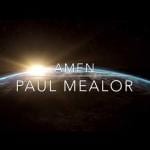Statement of Faith for Biblical Literalists
ARTICLE I: One day = six days
ARTICLE II: A circle has four corners
In Isaiah 40:22 the earth is said to be a circle. Elsewhere (e.g. Isaiah 11:12; Job 37:3; Revelation 7:1; 20:8), the Bible speaks of the ‘four corners of the Earth’. Both are true, and both must be taken literally; ergo, a circle has four corners.
ARTICLE III: Before = after
In Genesis 1:24-26, God creates various animals and then human beings. According to Genesis 2:19, the order is the reverse.
ARTICLE IV: Large bodies of water are only found in one place, called ‘seas’
In Genesis 1:9-10, God forms dry land by gathering the waters into one place, called ‘seas’. On a historical reading, this makes perfect sense: the worldview of ancient Israel and her neighbors knew only of peoples and civilizations near to ‘the sea’ (i.e. the Mediterranean). From their perspective, and on the basis of what they knew of the world, the whole world was land with one large sea in the middle (the Mediterranean) and a few others nearby. But a literalist has to argue that all current maps of the Earth are wrong, since they show bodies of water in many places.
ARTICLE V: Water = waterlessness
In Genesis 1, God creates by taking the existing deep and causing the waters to gather in one place, so that dry land appears. In Genesis 2, the land is what exists, and since there is as yet no rain, there are no plants, although springs do cause some water to flow onto this barren desert.
ARTICLE VI: The sky is a big solid dome
Genesis 1:6-7 uses a Hebrew word for a solid dome (in the King James Version this is translated as ‘firmament’). It is not simply the ‘atmosphere’ – that’s not the word used! It is something solid enough to hold up the waters above. Rain falls, other passages tell us, when ‘the windows of heaven are opened’. Of course, these could be beautiful metaphors, but if you insist that the Bible be interpreted literally, then that must apply to these parts of it too!
ARTICLE VII: And on the seventh article, this author rested…
The aforementioned ‘articles of faith’ are not intended to show that the creation accounts of the Bible are worthy of ridicule. On the contrary, I have a deep appreciation for them! I do think, however, that those who insist that they must be interpreted ‘literally’ (whatever that means) are imposing their own presuppositions on these texts in a way that is ridiculous. The result is that many get the impression that the texts themselves are ridiculous, whereas it is only the way they are being interpreted that is worthy of ridicule. Take for example the dilemma a literalist would face trying to reconcile Genesis 1:2-3 with 1 John 1:6. In one text, God is light, while in the other, God creates light. In one, there is no darkness in God at all, while in the Genesis passage, the Spirit of God and the darkness simultaneously co-exist on the face of the deep. Of course, the quick reply will be that 1 John 1:6 is clearly using metaphorical language. But what makes this obvious? Presumably the same common sense that leads most people to consider that a story that includes a talking snake is a myth or fable! We all bring assumptions to the text when we read it. Until a reader comes to understand that other people understand the text in different ways without intentionally twisting it to a conscious end, they will not realize how strange their own reading will seem to others starting from different presuppositions.
(This is a repost of something I shared here a literally long time ago.)













